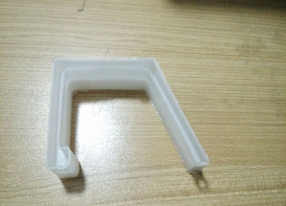poultry feed mixer machine
Nov . 24, 2024 19:47 Back to list
poultry feed mixer machine
The Role of Poultry Feed Mixer Machines in Modern Agriculture
In recent years, the poultry industry has seen significant advancements, particularly in the area of feed production. One of the crucial components of this process is the poultry feed mixer machine, which plays a pivotal role in ensuring the health and productivity of poultry. As the demand for poultry products continues to rise globally, the importance of such technology becomes even more pronounced.
Understanding Poultry Feed Mixer Machines
A poultry feed mixer machine is designed to combine various feed ingredients into a homogeneous mixture, ensuring that each poultry bird receives a balanced diet. These machines come in different sizes and specifications, catering to both small-scale farmers and large commercial poultry operations. The primary components of a feed mixer include the mixing chamber, motor, and discharge system. Depending on the design, some machines may also incorporate weighing systems for precise ingredient measurement.
Importance of Feed Mixing
Proper feed mixing is vital for several reasons. Firstly, a well-mixed feed ensures that the nutritional requirements of poultry are met. Birds require a balanced diet consisting of proteins, carbohydrates, vitamins, and minerals to grow, lay eggs, and maintain overall health. An unevenly mixed feed can lead to nutritional deficiencies or excesses, adversely affecting bird health and productivity.
Secondly, efficient feed mixing increases the overall efficiency of feed utilization. By ensuring that all feed components are evenly distributed, poultry can absorb nutrients more effectively, leading to better growth rates and feed conversion ratios. This is particularly critical in commercial operations where profitability is closely linked to the efficiency of feed use.
Additionally, automated feed mixers can save time and labor costs. Manual mixing is time-consuming and labor-intensive, often leading to inconsistencies. Modern feed mixers can complete the mixing process in a fraction of the time, allowing farmers to focus on other vital aspects of their operations while ensuring that the feeding process is efficient and reliable.
Types of Poultry Feed Mixer Machines
There are various types of feed mixer machines available in the market, each suited to different needs
. Some of the most common types include1. Horizontal Mixers These are popular for their efficiency in mixing large volumes of feed. The horizontal design allows for even mixing of ingredients, making them suitable for large-scale poultry operations.
poultry feed mixer machine

2. Vertical Mixers These mixers are more compact and are ideal for smaller farms. They require less space and are easier to operate but may take longer to achieve a homogeneous mixture compared to horizontal mixers.
3. Batch Mixers These machines mix a specific batch of feed at one time, making them suitable for operations that require different feed formulations for various groups of birds.
4. Continuous Mixers As the name suggests, these mixers continuously mix feed ingredients as they are added. This type is ideal for large operations that require constant feed production.
Choosing the Right Mixer
Selecting the right poultry feed mixer machine is crucial for optimizing feed production. Factors to consider include the scale of operation, specific mixing requirements, and budget. It's essential for farmers to evaluate their needs and consult with experts to choose a machine that will meet their production goals.
The Future of Feed Mixing Technology
As technology continues to evolve, the poultry industry is likely to see even further advancements in feed mixing solutions. Innovations such as automation, artificial intelligence, and smart technology integration are set to revolutionize the way feed is produced. These technologies can help monitor and control the mixing process, ensuring consistent quality and reducing waste.
Moreover, sustainability is becoming an integral part of agricultural practices. Future feed mixer designs may focus on energy efficiency and the use of renewable materials, further contributing to environmentally friendly poultry farming.
Conclusion
Poultry feed mixer machines are indispensable in the modern poultry industry, ensuring that animals receive the nourishment they require for optimal growth and productivity. As demand for poultry products increases, so too does the need for efficient and reliable feed mixing solutions. By investing in advanced feed mixer technology, farmers can enhance their production processes, improve feed efficiency, and ultimately contribute to a more sustainable agricultural future.
-
Hot Sale 24 & 18 Door Rabbit Cages - Premium Breeding Solutions
NewsJul.25,2025
-
Automatic Feeding Line System Pan Feeder Nipple Drinker - Anping County Yize Metal Products Co., Ltd.
NewsJul.21,2025
-
Automatic Feeding Line System Pan Feeder Nipple Drinker - Anping County Yize Metal Products Co., Ltd.
NewsJul.21,2025
-
Automatic Feeding Line System - Anping Yize | Precision & Nipple
NewsJul.21,2025
-
Automatic Feeding Line System - Anping Yize | Precision & Nipple
NewsJul.21,2025
-
Automatic Feeding Line System-Anping County Yize Metal Products Co., Ltd.|Efficient Feed Distribution&Customized Animal Farming Solutions
NewsJul.21,2025






